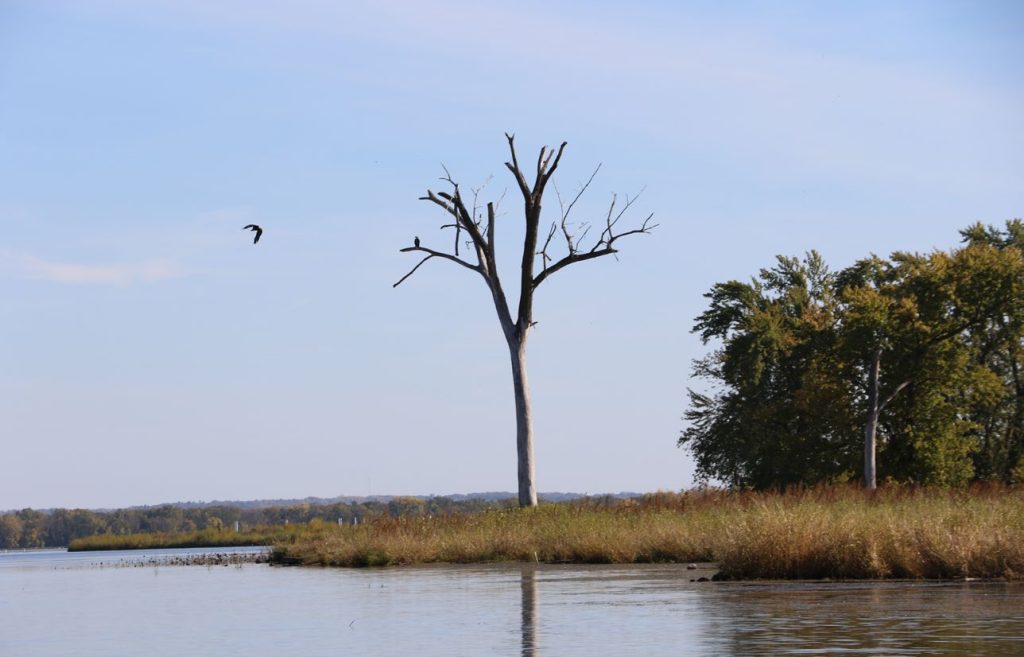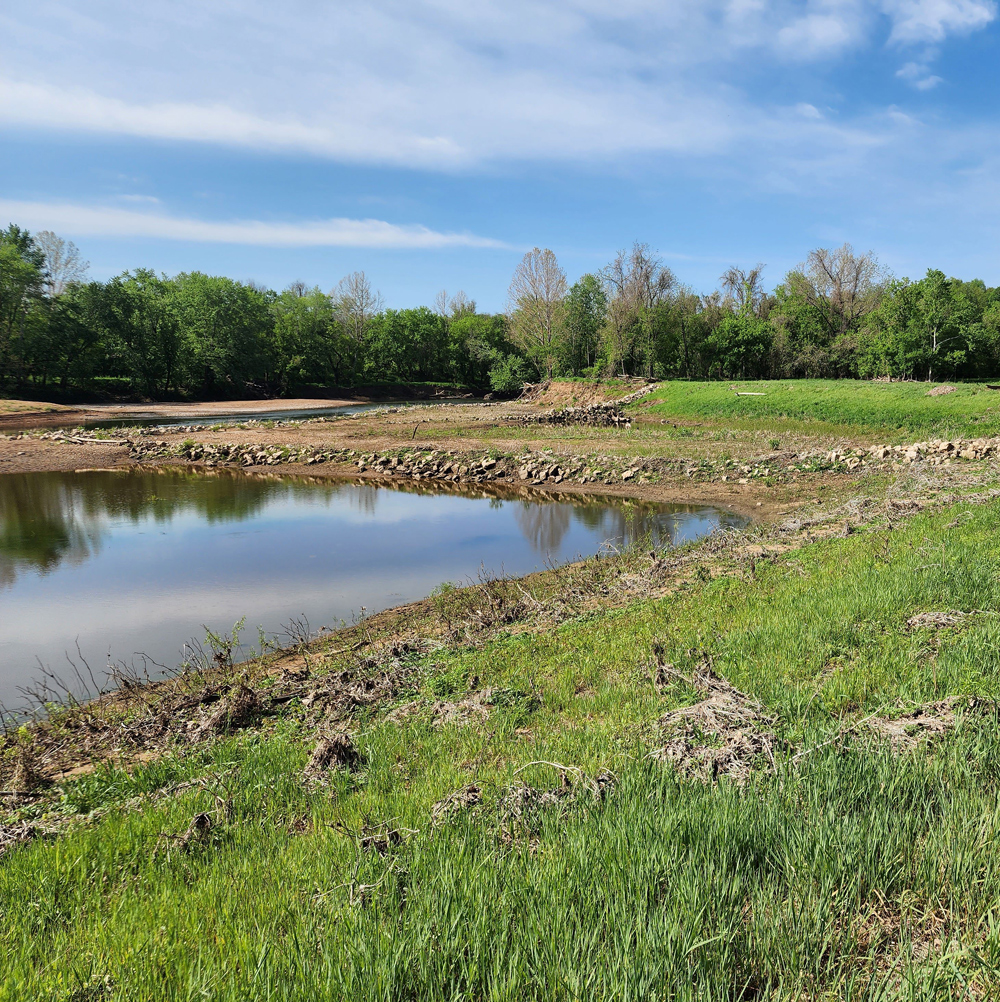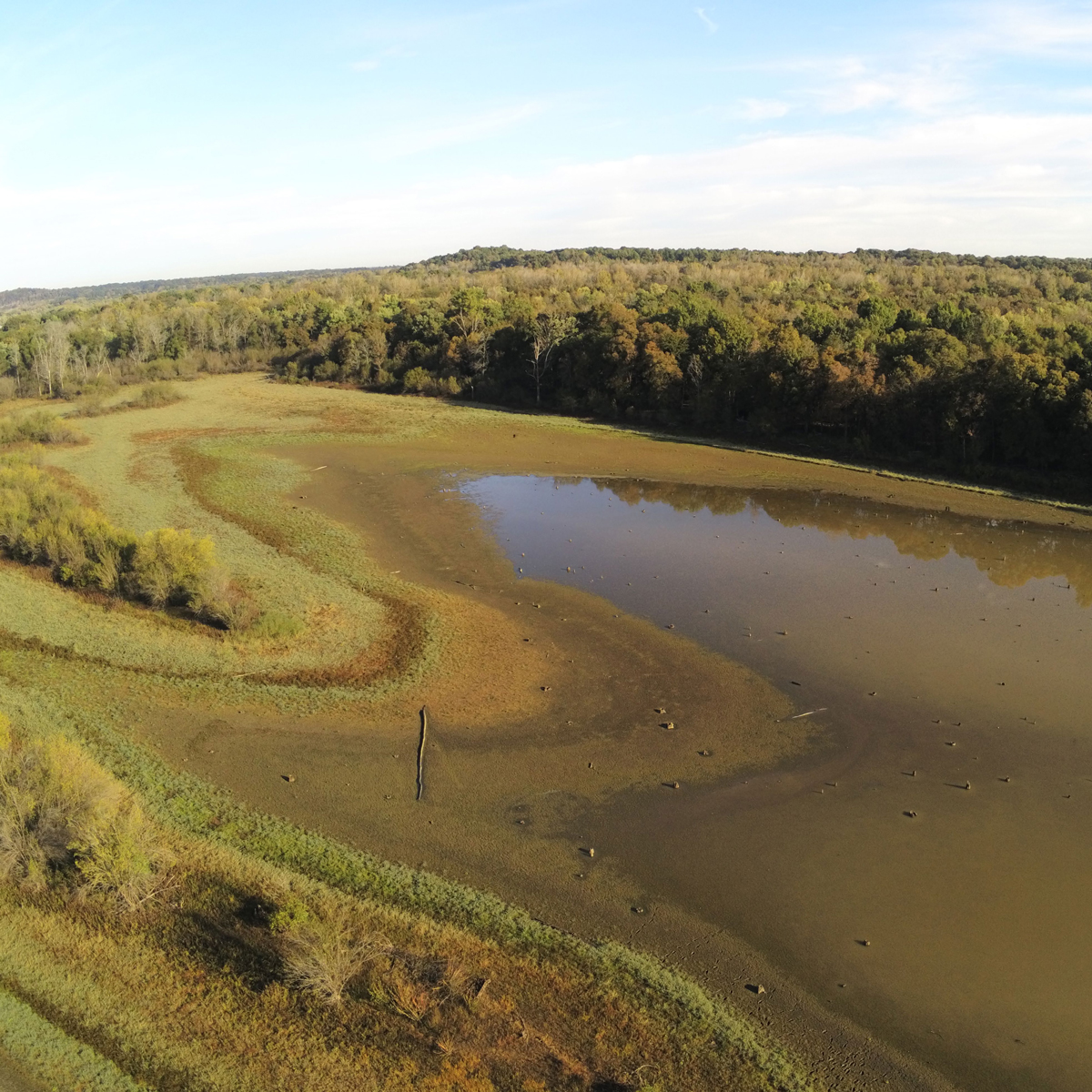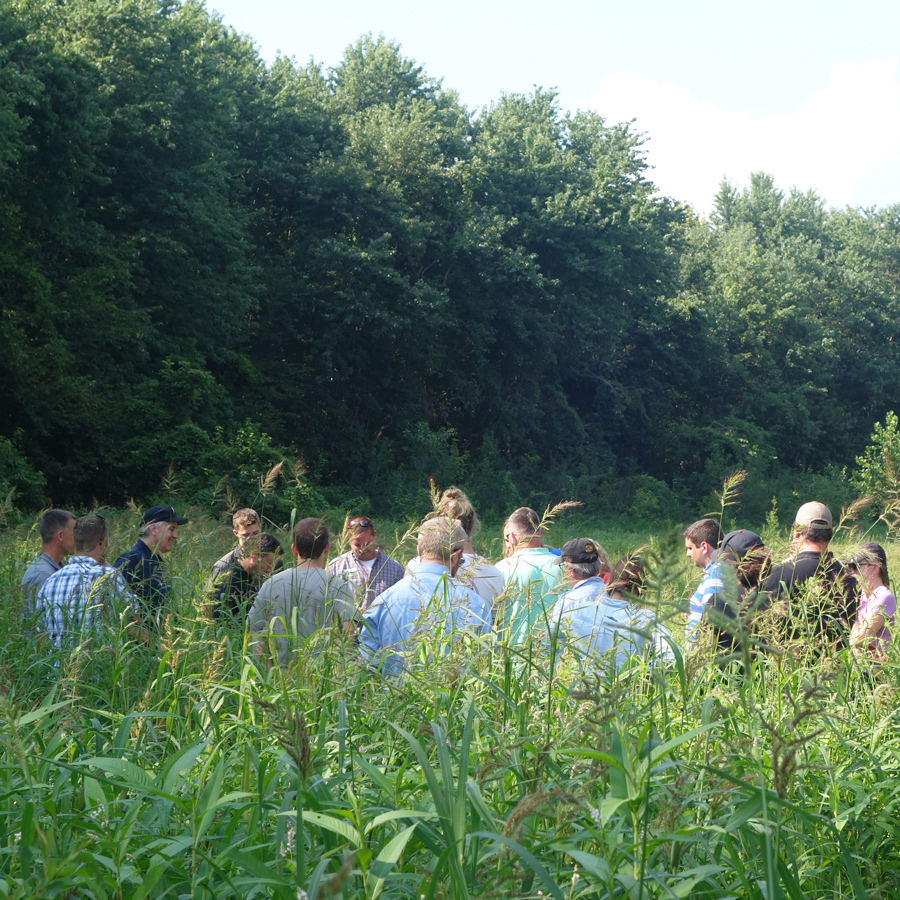This project is featured in Engineering With Nature: An Atlas, Volume 3.
Location: Welch, Minnesota, United States.
Increasing island stability, floodplain forest health, and habitat abundance. Construction of the Mississippi River’s almost three-meter navigation channel affected cultural resource sites, including lands belonging to the Prairie Island Indian Community (PIIC). Factors impacting historic properties include natural environmental processes, accelerated geomorphic processes due to altered hydrology, maintenance and operation activities required for the continued management of the Upper Mississippi River for navigation, and population and community growth. Therefore, after the completion of a feasibility study, the U.S. Army Corps of Engineers (USACE)–St. Paul District and the PIIC signed a project partnership agreement in February 2021 to design and construct a project to restore Buffalo Slough Island in Sturgeon Lake. Construction occurred from 2021 to 2023, completed by the district’s maintenance and repair crew. It included a rock bullnose at the north end of the island to prevent erosion and rock vanes with an access berm along the eastern side of the island to minimize bank erosion and serve as nesting and shelter habitat for birds, reptiles, and mammals. In addition, the island elevation was raised by placing granular material dredged from the main navigation channel on the island, encouraging the growth of native trees and supporting a floodplain forest habitat.

Producing Efficiencies
Shoreline protection measures were designed to prevent the loss of terrestrial and riparian habitat: a rock bullnose at the north end of the island to prevent erosion; angled rock vanes along the eastern side of the island to redirect flows away from the island, further preventing erosion; and a sand berm to increase the eastern side island’s physical size, providing land for planting grasses and trees and serving as nesting shelter and habitat for birds, reptiles, and mammals. The project provided the opportunity for beneficial use of dredged material by dredging the roughly threemeter navigation main channel of the Mississippi River for granular material.
Using Natural Processes
Restoration of floodplains in this portion of the Upper Mississippi River is most commonly accomplished by topography (ridges and swales in the landscape) and reforestation. To achieve an acceptable elevation that supports a mature forest stand that is flood tolerant and sustains a floodplain forest habitat, the elevation of the island was raised approximately 0.3 to 0.6 meter by placement of dredged material from the Mississippi River. A marina on PIIC’s property was also dredged for fine material. The use of dredged material smothered the invasive reed canary grass (Phalaris arundinacea) while bringing the island to a suitable elevation.
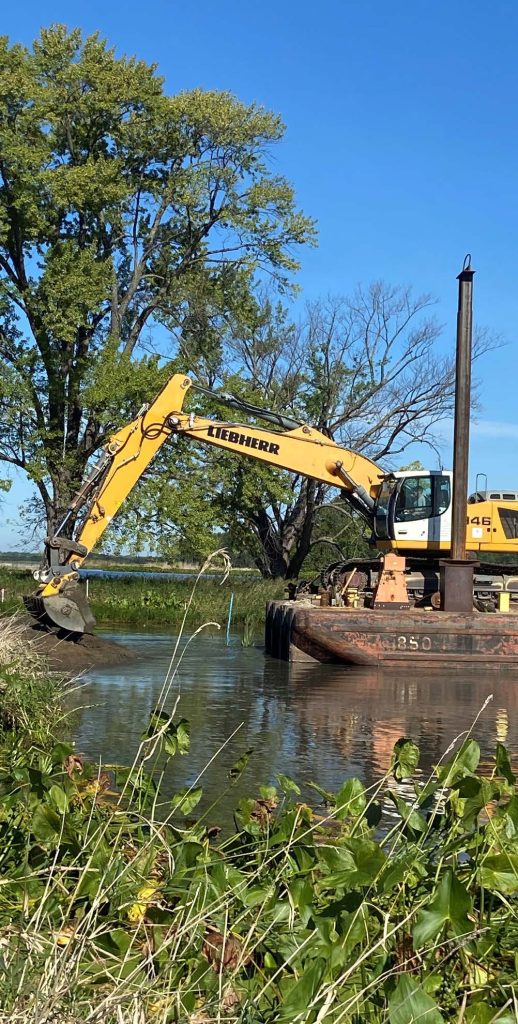

Broadening Benefits
Preserving and restoring river resources is of national interest due to their scarcity and role in the life cycle of native and protected flora and fauna. The upper Mississippi River ecosystem consists of hundreds of thousands of hectares of forests, islands, waterways, and wetlands, supporting hundreds of animal and plant species. The PIIC identified significant tribal resources in and around Sturgeon Lake and Buffalo Slough Island important to their cultural heritage: a healthy floodplain forest providing nesting trees for bald eagles (Haliaeetus leucocephalus), emergent vegetation for the tribe’s food and medicine, fisheries for recreation and cultural sustenance, and a healthy waterfowl migratory corridor.

Promoting Collaboration
This is only the second project in the nation to complete design and construction under the USACE Tribal Partnership Program, which aims to identify and assist with water resources projects that will significantly benefit Native tribes. In addition to the USACE St. Paul District, the project team included the PIIC as the project sponsor. The team also engaged the Minnesota Department of Natural Resources and the Wisconsin Department of Natural Resources to provide subject matter expertise in Sturgeon Lake and on ecosystem restoration projects.
